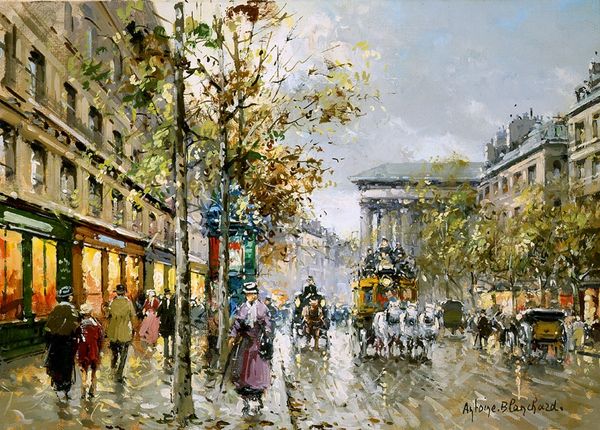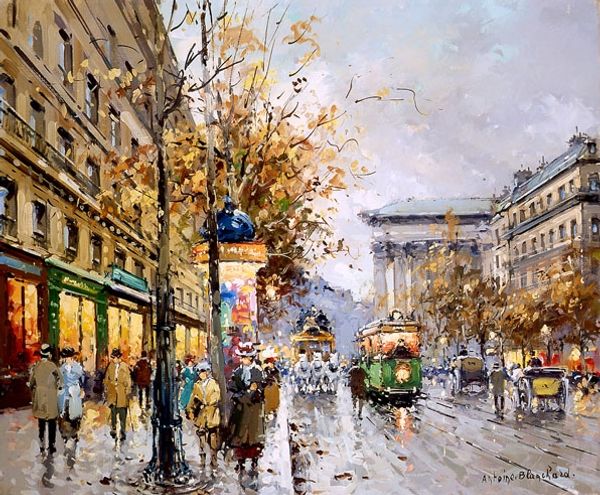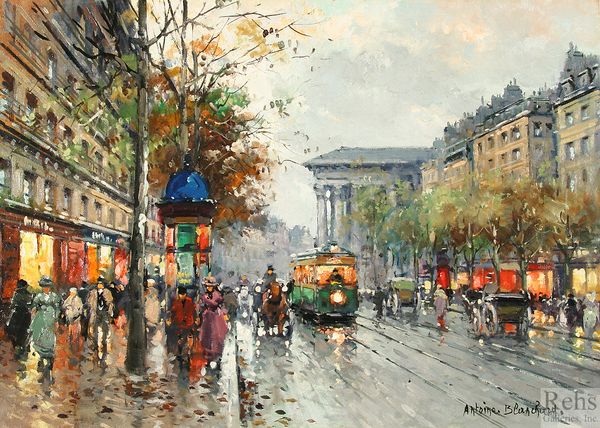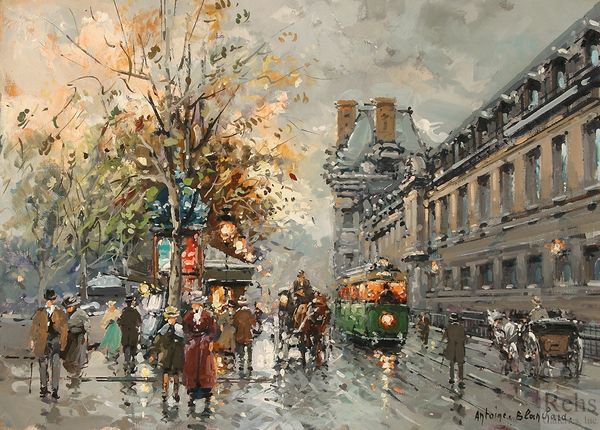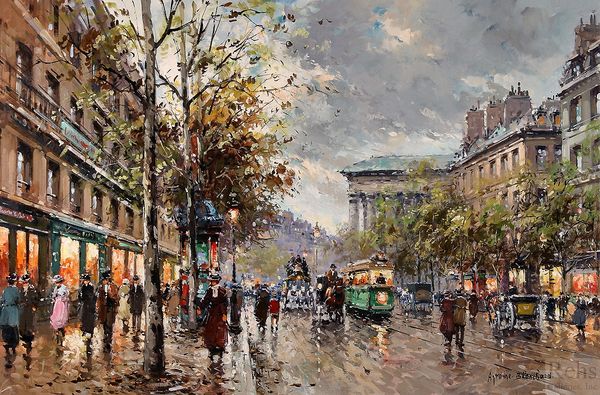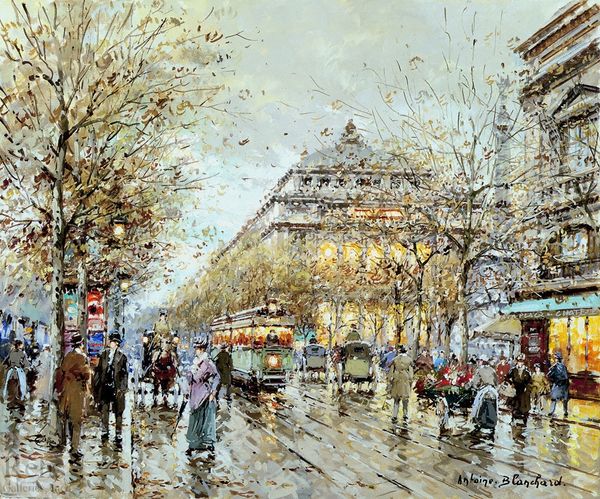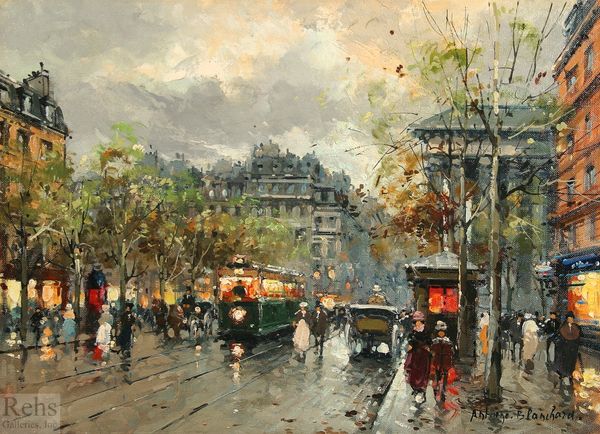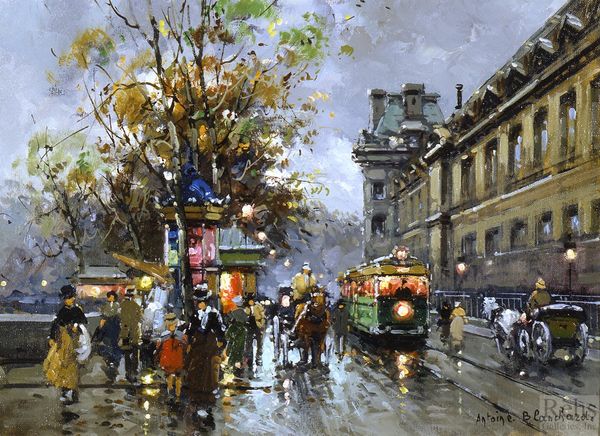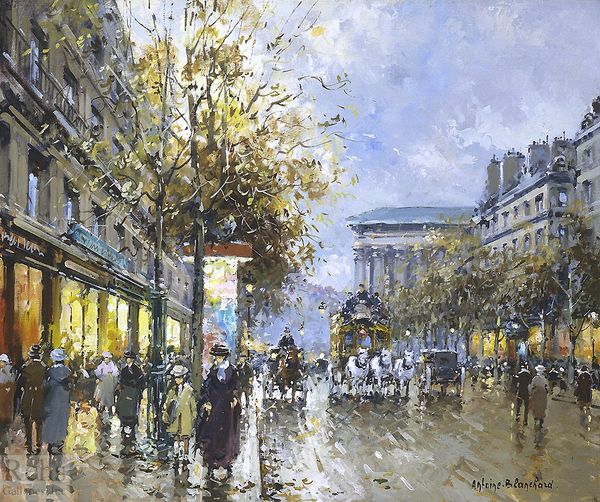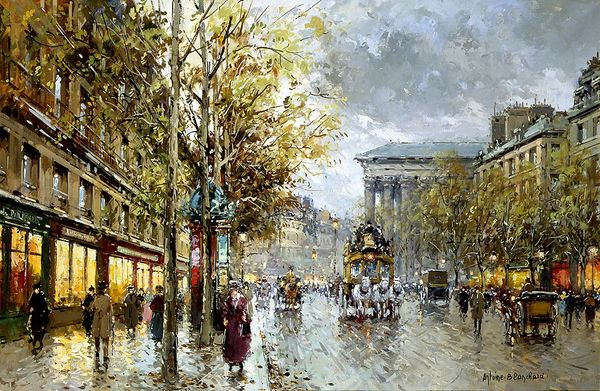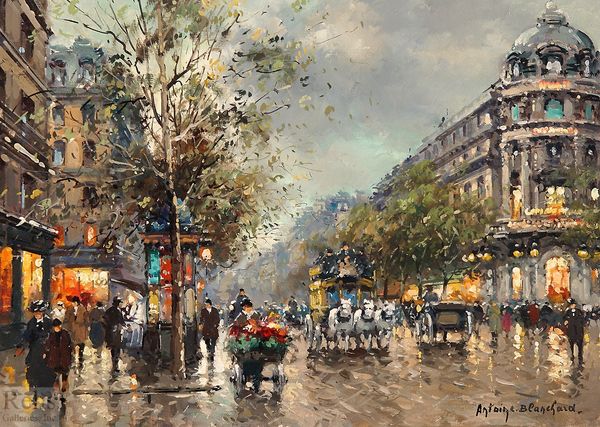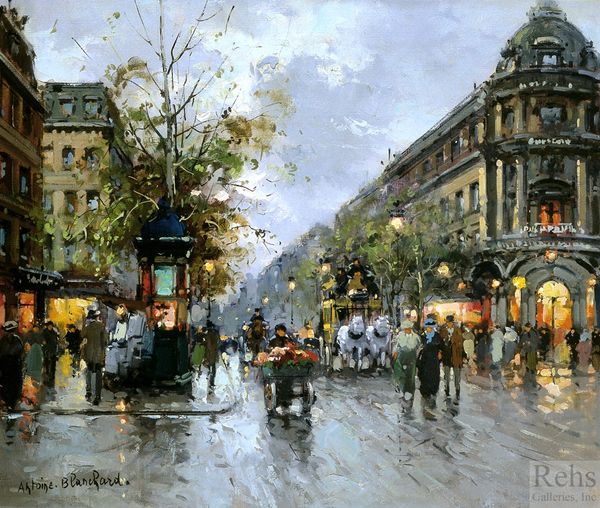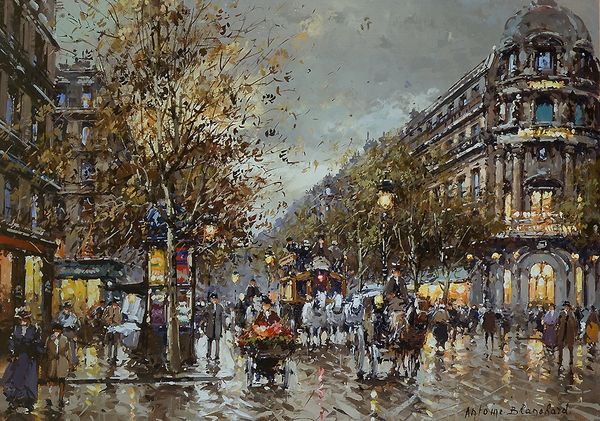
painting, oil-paint
#
portrait
#
tree
#
urban landscape
#
painting
#
impressionism
#
street view
#
oil-paint
#
vehicle
#
landscape
#
urban cityscape
#
impressionist landscape
#
figuration
#
oil painting
#
city scape
#
road
#
urban art
#
cityscape
#
urban environment
#
street
#
building
Copyright: Antoine Blanchard,Fair Use
Editor: So, we're looking at "Boulevard de la Madeleine," an oil painting by Antoine Blanchard. It has this hazy, romantic feel that reminds me of Impressionism. It’s so evocative, but what I wonder is: what were paintings like this trying to communicate about urban life? Curator: That’s a fantastic question. Blanchard, though painting later than the original Impressionists, taps into a vein of capturing modern Parisian life. It's critical to remember that this is not just a visual record; it is a carefully constructed *representation* of a rapidly changing society. Think about the social transformations happening in Paris during the late 19th and early 20th centuries: industrialization, urbanization, a growing middle class... Editor: So, this idyllic street scene is really part of something bigger? Curator: Absolutely. The flâneur, the leisurely stroller, became a recurring figure in art and literature of this period. Blanchard offers us a somewhat nostalgic take, focusing on a romanticised view of Paris rather than gritty social realism. He is selling an image, a fantasy even. Editor: It is very pretty to look at, but now that you mention the "fantasy" aspect, I wonder what's missing from this picture, and who exactly was being left out from enjoying this version of Paris? Curator: Precisely! Who benefited from this beautification, and who was displaced? How does Blanchard's painting compare to, say, gritty photographs of the same era depicting poverty and inequality? These are important questions to consider. Editor: I hadn’t considered it that way. Now I’m seeing this work with a more critical eye, realizing it's more than just a pretty picture, but a statement – or maybe even an omission – about Parisian society. Curator: Exactly! Analyzing what *isn't* shown is often as revealing as analyzing what is. The image reflects the art market trends and middle-class aspirations, more so than social document.
Comments
No comments
Be the first to comment and join the conversation on the ultimate creative platform.
